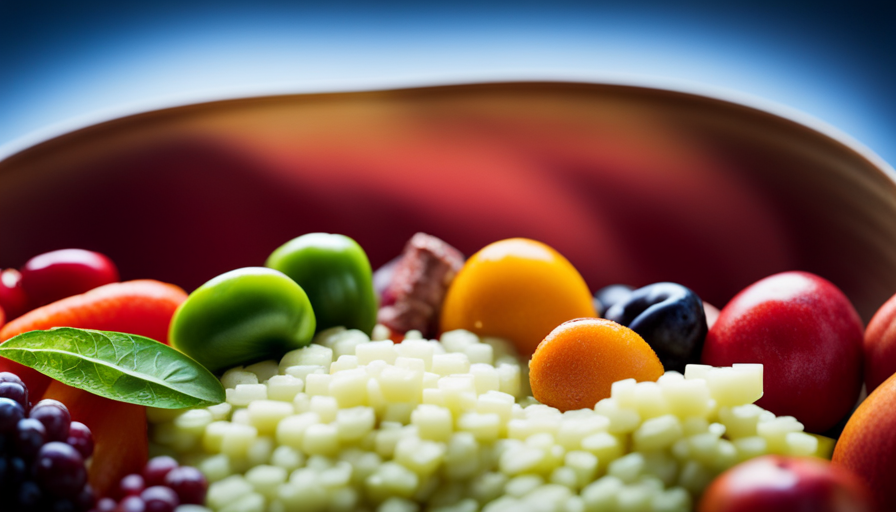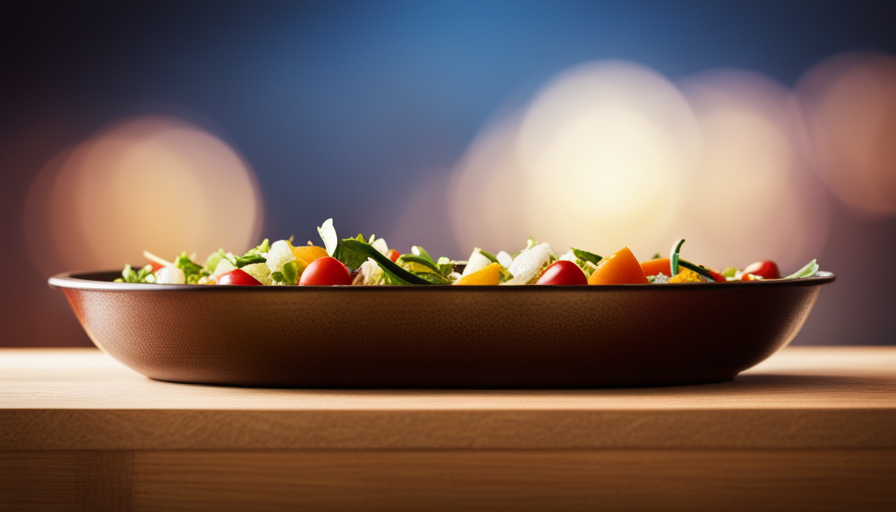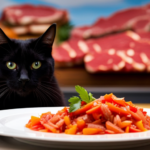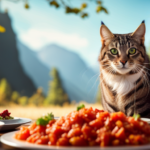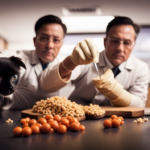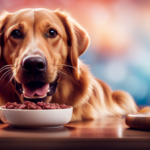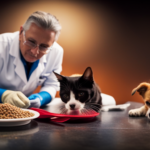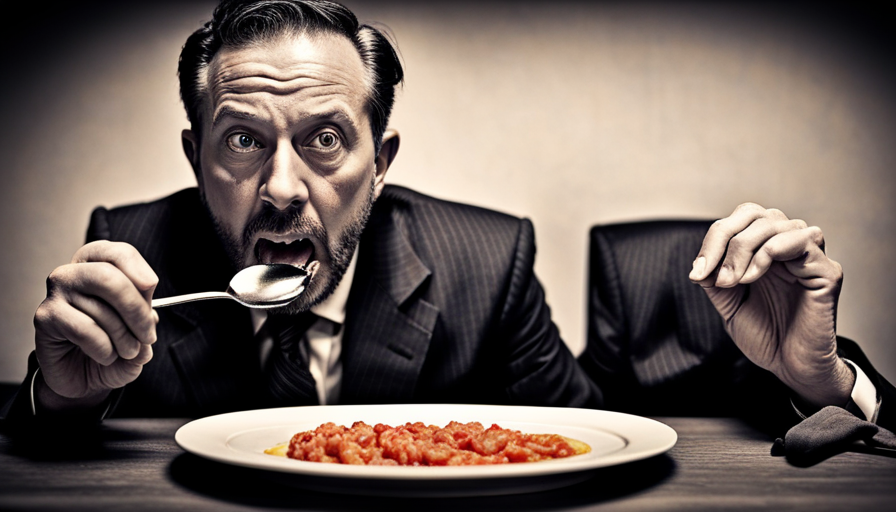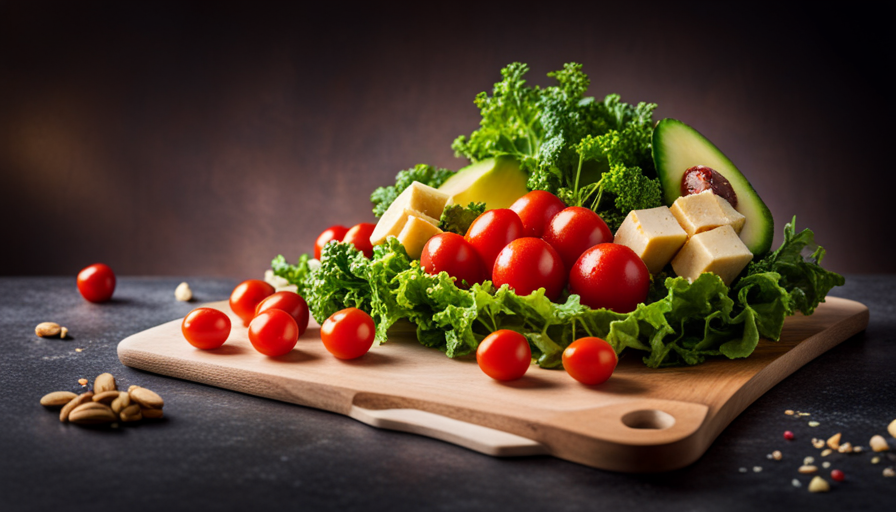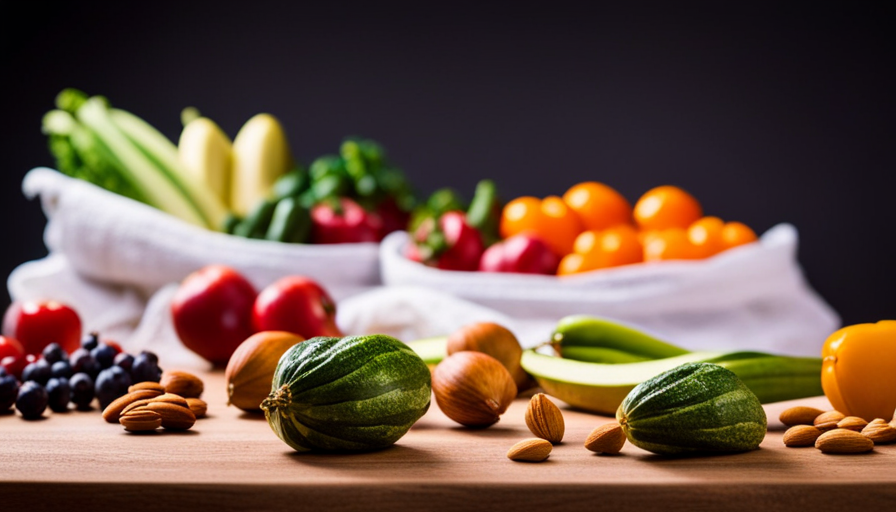Are you prepared to set off on a food journey for your beloved pet?
Picture this: the aroma of freshly prepared meals wafting through your kitchen, as your pet eagerly awaits a feast fit for a carnivore.
Transitioning from dry food to a raw food diet can be a game-changer for your pet’s health and well-being. Raw food diets mimic the natural diet of wild animals, providing them with a nourishing and biologically appropriate meal.
But before you dive headfirst into this new culinary journey, it’s important to arm yourself with knowledge and guidance. In this article, we will explore the benefits of a raw food diet for pets, and guide you through the step-by-step process of transitioning from dry food to raw food.
From consulting with your veterinarian to balancing nutritional needs, addressing digestive issues, and ensuring safe handling of raw food, we’ve got you covered.
So, let’s roll up our sleeves and get ready to whip up some delicious and nutritious meals for your four-legged companion.
Key Takeaways
- Transitioning from dry food to raw food can improve a pet’s health and well-being.
- Consulting with a veterinarian is important when transitioning to a raw food diet.
- Introducing raw food slowly and managing portion sizes is key for a smooth transition.
- Balancing nutritional needs includes providing the right amount of protein, fats, and carbohydrates.
Understanding the Benefits of a Raw Food Diet for Pets
If you’re wondering why a raw food diet is beneficial for your furry friend, we’ve got the answers for you! Understanding the risks of a raw food diet for pets is important, but exploring alternative diets for pets can open up a whole new world of health benefits.
Raw food diets have gained popularity among pet owners because they closely mimic what animals would eat in the wild. By feeding your pet a raw food diet, you’re providing them with a diet that’s rich in natural nutrients, enzymes, and vitamins that can support their overall health and well-being.
One of the main benefits of a raw food diet is improved digestion. Raw food is easier for pets to digest compared to processed kibble, which often contains fillers and additives that can cause digestive issues. By feeding your pet raw food, you can help alleviate issues such as gas, bloating, and diarrhea.
Another advantage of a raw food diet is the potential for healthier skin and coat. Many pet owners report that their pets’ fur becomes shinier and softer after transitioning to a raw food diet. This is because raw food is packed with essential fatty acids and amino acids that promote healthy skin and coat.
Additionally, a raw food diet can boost your pet’s immune system. Raw food contains natural antioxidants and anti-inflammatory properties that can help prevent chronic diseases and improve overall immune function.
While there are risks associated with a raw food diet, such as bacterial contamination and nutritional imbalances, these can be minimized by following proper food handling and working with a veterinarian or animal nutritionist to ensure a balanced diet.
Understanding the benefits of a raw food diet for pets is crucial when considering a transition from dry food. Improved digestion, healthier skin and coat, and a stronger immune system are just a few of the advantages that a raw food diet can offer to your furry friend. Remember to explore alternative diets for pets and consult with a professional to ensure the best possible nutrition for your pet.
Consulting with Your Veterinarian
First, reach out to your veterinarian, a trusted guide who can lead you down the path of nourishing your furry friend with a fresh, wholesome diet. Your vet is an expert in animal nutrition and can provide you with valuable recommendations when transitioning your pet from dry food to raw food.
They will assess your pet’s health condition and specific dietary needs, taking into consideration any underlying medical conditions or allergies.
When consulting with your veterinarian about transitioning to a raw food diet, there are a few important points to discuss:
-
Transitioning plan: Your vet can help you create a gradual transition plan that minimizes any potential digestive upset. They may recommend starting with a small percentage of raw food mixed with your pet’s current diet and gradually increasing the amount over time.
-
Nutritional balance: A raw food diet should provide your pet with all the necessary nutrients for optimal health. Your vet can guide you on ensuring that the raw food diet you choose is nutritionally balanced and meets your pet’s specific needs.
-
Potential risks: While raw food diets have many benefits, there are also potential risks to consider, such as bacterial contamination and nutritional imbalances. Your vet can provide you with information on how to minimize these risks and ensure the safety of your pet.
Remember, your veterinarian is there to help you make the best decision for your pet’s health. By following their recommendations and seeking their guidance, you can safely transition your pet to a raw food diet.
Gradual Transitioning: Introducing Raw Food Slowly
To ensure a smooth and enjoyable journey towards a fresh, wholesome diet for your furry friend, it’s important to introduce the new nourishment gradually. Transitioning from dry food to raw food can be a big change for your pet’s digestive system, so taking it slow is key. By gradually introducing raw food, you can help your pet adjust to the new textures and flavors while managing portion sizes.
One way to introduce raw food slowly is by starting with small amounts mixed in with their regular dry food. This allows your pet to get used to the new taste and texture without overwhelming their system. Over time, you can gradually increase the amount of raw food and decrease the dry food until your pet is fully transitioned.
Another helpful tip is to manage portion sizes during the transition process. It’s important to remember that raw food is more nutrient-dense than dry food, so your pet may require smaller portions. Consulting with your veterinarian can help you determine the appropriate portion sizes based on your pet’s age, weight, and activity level.
Table:
| Tips for Gradual Transitioning |
|---|
| Start with small amounts of raw food mixed with dry food |
| Gradually increase the amount of raw food and decrease dry food |
| Manage portion sizes based on your pet’s needs |
| Consult with your veterinarian for guidance |
By following these gradual transitioning techniques and managing portion sizes, you can help your pet adjust to their new raw food diet with ease and ensure a happy and healthy transition.
Balancing Nutritional Needs: Protein, Fats, and Carbohydrates
Balancing your pet’s nutritional needs is essential for their overall health and well-being, ensuring they receive the right amount of protein, fats, and carbohydrates. Understanding your pet’s dietary requirements is crucial when transitioning from dry food to raw food.
Protein is a vital component of their diet as it supports muscle development and repair. Good sources of protein for raw feeding include lean meats such as chicken, turkey, and beef.
Fats are also important for providing energy and supporting the immune system. Healthy fats can be found in fish oils and coconut oil.
Carbohydrates, while not as essential for dogs and cats, can still be included in small amounts through fruits and vegetables.
When transitioning to raw food, it is important to find reputable raw food suppliers. Look for suppliers that source their ingredients from trusted sources and follow strict quality control measures. They should provide a variety of proteins and offer balanced blends that meet your pet’s nutritional needs.
Additionally, consider consulting with a veterinarian or a pet nutritionist to ensure you are providing a well-balanced raw diet.
By understanding your pet’s dietary requirements and finding reputable raw food suppliers, you can ensure a smooth transition from dry food to raw food. Your pet will benefit from a balanced diet that supports their overall health and well-being, promoting a vibrant and active lifestyle.
Incorporating Variety: Different Types of Raw Food
When it comes to your pet’s diet, don’t be afraid to mix it up and introduce a variety of different types of fresh, unprocessed meals. Incorporating different protein sources in your pet’s raw food diet can provide a balanced and nutritious meal.
Dogs and cats require a variety of proteins to meet their nutritional needs. Some common protein sources for dogs include chicken, beef, turkey, and fish. For cats, it’s important to include organ meats like liver and heart in their diet. These meats are rich in vitamins and minerals that are essential for their health.
When sourcing raw food for your pet, it’s important to choose high-quality ingredients. Look for reputable suppliers that offer human-grade meats and organic options. It’s also essential to handle and store raw food properly to prevent contamination and ensure freshness. Freeze raw food until it’s ready to be fed to your pet, and thaw it in the refrigerator to avoid bacterial growth.
By incorporating a variety of different types of raw food into your pet’s diet, you can provide them with a diverse range of nutrients and flavors. This can help prevent boredom and ensure they’re getting all the essential nutrients they need for optimal health. Remember to consult with your veterinarian before making any changes to your pet’s diet.
Monitoring Your Pet’s Response to the Transition
When transitioning your pet from dry food to raw food, it’s important to monitor their response to the change. This will help you understand how well they’re adapting and whether any adjustments need to be made.
To track your pet’s progress during the transition, keep an eye out for the following indicators:
-
Stool consistency: Observe any changes in your pet’s stool. Raw food can sometimes result in softer or looser stools initially, but this should stabilize over time.
-
Coat condition: Notice if your pet’s coat becomes shinier and healthier. A dull coat could indicate that the new diet isn’t providing all the necessary nutrients.
-
Energy levels: Pay attention to your pet’s energy levels. If they seem more energetic and playful, this could be a positive sign that the raw food is suiting them well.
-
Weight management: Regularly weigh your pet to ensure they’re maintaining a healthy weight. Adjust portion sizes if necessary to prevent weight gain or loss.
-
Overall health: Keep an eye on your pet’s overall health. If they’re experiencing any digestive issues or allergies, it may be necessary to make adjustments to the type or amount of raw food being fed.
By tracking your pet’s progress and adjusting portion sizes as needed, you can ensure a successful transition from dry food to raw food.
Addressing Digestive Issues and Allergies
To address any digestive issues or allergies your pet may be experiencing, it’s important to carefully observe their overall health and make necessary adjustments to their diet. Some pets may experience digestive issues when transitioning to a raw food diet, such as diarrhea or vomiting. This can be a result of their digestive system adapting to the new types of food. In these cases, it’s essential to introduce the raw food gradually, starting with small portions and slowly increasing the amount over time. Additionally, adding digestive enzymes to their meals can help improve digestion and alleviate any discomfort.
Allergies can also be a concern when transitioning to a raw food diet. If you notice any signs of an allergic reaction, such as itching, redness, or excessive licking, it’s important to identify the ingredient causing the allergy. One way to do this is by implementing an elimination diet. This involves removing certain ingredients from your pet’s diet for a period of time and then reintroducing them one by one to see if any reactions occur. This process can help identify specific food allergies and allow you to tailor your pet’s diet accordingly.
To help you track your pet’s response to the transition and identify any potential digestive issues or allergies, you can use the following table:
| Symptom | Frequency | Severity | Action Taken | Result |
|---|---|---|---|---|
| Diarrhea | Once a day | Mild | Reduced portion | Resolved |
| Vomiting | Every few days | Moderate | Added enzymes | Improved |
| Itching | Daily | Severe | Eliminated chicken | Reduced itching |
Remember, every pet is unique, and their response to a raw food diet may vary. It’s important to consult with your veterinarian if you have any concerns or questions throughout the transition process.
Ensuring Safe Handling and Storage of Raw Food
Now that you’ve addressed the digestive issues and allergies your pet may have had during the transition from dry food to raw food, it’s important to focus on ensuring the safe handling and storage of raw food. This step is crucial to maintain the quality and safety of the food for your pet.
When handling raw food, it’s essential to follow proper hygiene practices. Make sure to wash your hands thoroughly before and after handling the food. Additionally, clean all utensils, cutting boards, and surfaces that come into contact with raw food to avoid cross-contamination.
Raw food should be stored in the refrigerator or freezer to prevent the growth of bacteria. It’s recommended to divide the food into individual portions and freeze them for easy access. When thawing, do so in the refrigerator or using a microwave on a low setting to avoid bacterial growth.
During the transition, closely observe your pet’s response to the raw food. Look for any signs of digestive issues or allergies and make adjustments as needed. If necessary, consult with your veterinarian for guidance.
Remember, transitioning to a raw food diet requires careful planning to ensure your pet receives all the necessary vitamins and minerals. It’s important to maintain a balanced diet by including a variety of proteins, fruits, and vegetables.
By following these guidelines for safe handling and storage of raw food, you can help ensure a successful transition for your pet while maintaining their health and well-being.
Supplementing with Vitamins and Minerals
To ensure your pet’s health and vitality, it’s crucial to consider supplementing their diet with essential vitamins and minerals. Just like humans, pets also require a diverse range of nutrients to thrive. By incorporating vitamin and mineral supplementation into their raw food diet, you can provide them with a vibrant and nourishing feast.
Vitamin supplementation is important because it helps fill in any nutritional gaps that may exist in your pet’s raw food diet. Some vitamins, such as vitamin D and vitamin E, aren’t naturally abundant in raw meat and organs. By adding these vitamins to your pet’s meals, you can ensure they’re getting all the necessary nutrients for optimal health. Additionally, vitamin C can be beneficial for pets as it acts as an antioxidant and supports their immune system.
Mineral supplementation is equally important. Minerals like calcium, phosphorus, and magnesium are essential for maintaining strong bones and teeth. These minerals are often found in the bones and connective tissues of animals, which may not be included in your pet’s raw food diet. By supplementing with these minerals, you can promote proper growth and development in your pet.
When choosing vitamin and mineral supplements, it’s important to consult with a veterinarian to ensure you’re providing the appropriate dosage. They can also help you select high-quality supplements that are safe for your pet’s consumption.
Supplementing your pet’s raw food diet with essential vitamins and minerals is crucial for their overall health and vitality. By sprinkling a rainbow of nutrients onto their meals, you can create a vibrant and nourishing feast that supports their well-being. Remember to consult with your veterinarian to determine the appropriate supplementation for your pet.
Maintaining a Healthy and Balanced Diet
Ensuring a healthy and balanced diet for your pet involves incorporating a variety of nutrient-rich ingredients. When transitioning from dry food to raw food, it’s important to maintain the right portion control to ensure your pet maintains a healthy weight. Portion control is crucial to prevent overeating and obesity, which can lead to various health issues.
To maintain a balanced diet, it’s essential to provide the necessary nutrients in appropriate quantities. A well-rounded raw food diet should consist of muscle meat, organ meat, and bone. These three components provide a range of essential vitamins and minerals. The table below outlines the essential nutrients and their sources in a raw food diet:
| Nutrient | Source |
|---|---|
| Protein | Muscle meat |
| Iron | Organ meat |
| Calcium | Bone |
By incorporating these nutrient-rich ingredients in the right proportions, you can ensure that your pet’s diet remains balanced and healthy. It’s important to consult with a veterinarian or a pet nutritionist to determine the appropriate portion sizes for your pet based on their age, activity level, and health condition. Regular monitoring of your pet’s weight and adjusting portion sizes accordingly will help maintain their ideal weight and overall health.
Frequently Asked Questions
Can I feed my pet a combination of dry food and raw food?
Yes, you can definitely feed your pet a combination of dry food and raw food. Combining dry food and raw food for pets has several benefits. It provides a balanced diet with the convenience of dry food and the nutritional advantages of raw food. This mixed diet can help meet your pet’s dietary needs, promote better digestion, and enhance their overall health. However, it’s important to consult with your veterinarian to ensure you’re feeding the appropriate proportions and maintaining a balanced diet for your pet.
How long does it typically take for a pet to fully transition to a raw food diet?
Typically, it takes around 2-3 weeks for a pet to fully transition to a raw food diet. However, the transition time can vary depending on the individual pet.
Common challenges in transitioning to a raw food diet include digestive upset, refusal to eat, and a potential change in stool consistency. It’s important to introduce the raw food gradually, mixing it with the dry food initially and gradually increasing the proportion of raw food over time.
Are there any potential risks or side effects associated with feeding a raw food diet to pets?
When considering a raw food diet for your pets, it’s important to be aware of potential risks and side effects. While many pet owners have successfully transitioned their pets to a raw food diet without any issues, there are some factors to consider.
These can include the risk of bacterial contamination, nutrient imbalances, and the potential for choking hazards. It’s crucial to consult with a veterinarian and conduct thorough research to ensure a safe and balanced raw food diet for your pets.
Can I prepare my own raw food meals for my pet, or should I buy pre-packaged raw food?
Preparing homemade raw food for your pet is a great option if you have the time and knowledge to ensure a balanced diet. By making your own raw food, you have full control over the ingredients and can cater to your pet’s specific needs. However, it’s essential to consult with a veterinarian or a veterinary nutritionist to ensure you’re meeting all of your pet’s nutritional requirements.
Alternatively, buying pre-packaged raw food can be convenient and provide a balanced diet, but it’s crucial to choose a reputable brand that follows strict quality control measures. Is a raw food diet suitable for all pets? While many pets thrive on a raw food diet, it’s important to consider factors such as the pet’s specific health conditions, age, and breed before making the switch. It’s always best to consult with a veterinarian to determine the most appropriate diet for your pet.
Is it necessary to consult with a veterinarian before making the transition to a raw food diet for my pet?
Consulting with a veterinarian before transitioning your pet to a raw food diet is essential. Proper nutrition is crucial for your pet’s overall health and well-being.
A veterinarian can assess your pet’s specific needs, offer guidance, and ensure a smooth transition. They can also address any concerns or potential risks associated with a raw food diet.
Remember, a raw food diet can provide numerous benefits, such as improved digestion, healthier skin, and a stronger immune system. Prioritize your pet’s health by seeking professional advice.
What Are the Benefits of Transitioning to Raw Food for Pets?
Transitioning to raw food recipes for pets can have several benefits. It can improve their digestion, increase energy levels, and promote healthier coats. Raw diets can also reduce the risk of certain health issues. Additionally, many pet owners report that their pets have smaller, firmer, and less smelly stools.
Conclusion
So, you’ve made the brave decision to transition your furry friend from dry food to raw food. Congratulations! You’re embarking on a journey that promises a multitude of benefits for your pet’s health and well-being.
But hold on, don’t dive headfirst into the raw food world just yet. Take the time to consult with your veterinarian, gradually introduce raw food, balance their nutritional needs, incorporate variety, address digestive issues and allergies, handle and store the raw food safely, and don’t forget to supplement with vitamins and minerals.
Remember, a healthy and balanced diet is key. Good luck on your raw food adventure!

